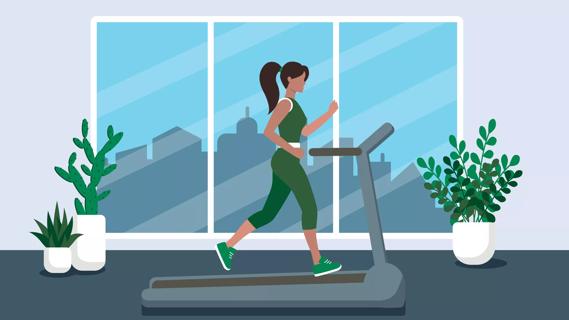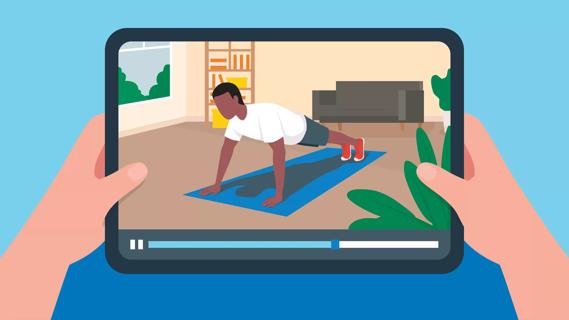Advertisement
Take steps to stay on track and off the sidelines

If you’re a runner, you know that hitting the pavement can take a heavy toll on your body. From runner’s knee to shin splints, an injury can sabotage your training or worse — it can take you out during the first leg of a competition for which you’ve spent months training.
Advertisement
Cleveland Clinic is a non-profit academic medical center. Advertising on our site helps support our mission. We do not endorse non-Cleveland Clinic products or services. Policy
But you can help stack the odds in your favor. Whether you’re a beginner or a pro, here are six things you can do to help minimize your chances of getting hurt.
Before you even hit the pavement or track, boost your confidence with the right running shoes.
Your foot should fit snug in the heel, with a little wiggle room around your toes, says exercise physiologist Christopher Travers, MS. To guarantee the best fit, get a proper fitting at a specialty running store and wear your usual running socks when you go.
But it’s not enough to buy the right shoes. You also need to maintain them properly. “We recommend replacing your shoes every 400 to 600 miles, or about every six months if you run regularly,” Travers says.
One of the best ways to prevent an injury is to keep your body loose and limber. To do this, add flexibility exercises into your routine.
“The more flexible your body is, the more range of motion you have and the less injury-prone you become,” Travers says.
Yoga is a great way to improve your flexibility. It can enhance your balance and flexibility, and leave you feeling calmer and more mentally focused.
The stronger your muscles are, the less likely they will break down. Strength training can help you increase muscle tone, strength, endurance and bone density.
Lift when your schedule can accommodate it. Ideally, you can work with weights at the gym or at home one day and run the next day.
No one knows your body better than you do. If you’re feeling sluggish or run down, it’s best to skip training that day. Or you may need to reduce the time or distance you were originally planning to run.
Rest is also critical. Take time off from running each week to help avoid injuries and fatigue that can occur when you push too hard.
Always take it slow when you’re starting out. If you’re training for a 5K, you’re not going to run that distance on your first day of training. Start with shorter runs and gradually increase your distance over the course of several weeks.
Another important tip: Never increase distance and intensity during the same week.
Finally, before you start your training, check in with your doctor. “They may have some injury prevention suggestions and can address any possible limitations you might have,” Travers says.
Implementing these tips can help make you a stronger runner and empower you to achieve your goals, no matter how ambitious they are.
Advertisement
Learn more about our editorial process.
Advertisement

This persistent myth isn’t true and can actually cause more pain than relief

Walking is a great goal, but how many steps are best for you depends on factors like your fitness level and age

A walking pad is a simplified treadmill that can fit under your desk and help you get more movement in your day

First, reflect on your specific workout goals, and then pick and choose your fitness equipment

Reducing your pace allows you to log more miles and train your body for the stress of running

Easing up on your routine can help your body recover and get stronger

Let your little one’s enthusiasm and motivation fuel their interest in running, but don’t pile on miles too early

You don’t need to spend big money on better health

Your metabolism may torch 1,300 to 2,000 calories daily with no activity

A gentle touch in all the right places may help drain your sinuses